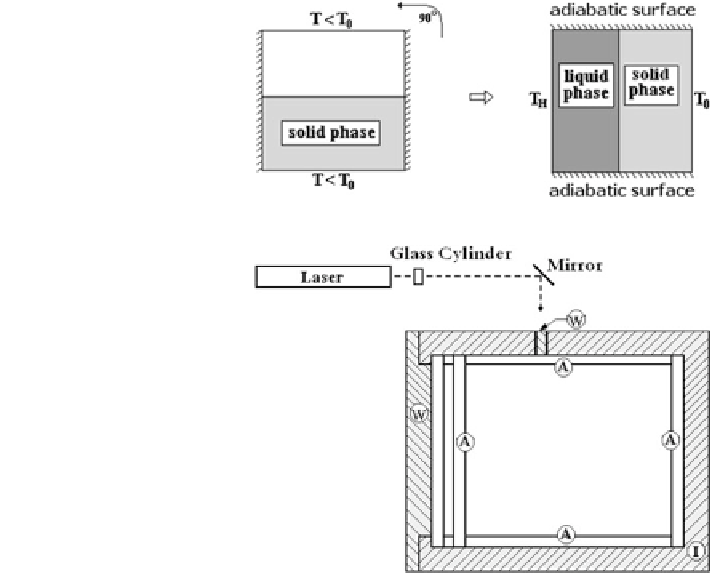Information Technology Reference
In-Depth Information
Fig. 12.4
Initial condition
Fig. 12.5
The illumination
system
patterns were taken using ASA 100 film (T-Max) and a 35 mm camera. The
exposure time was about 60 s, with f = 5.6. Figure
12.5
shows schematically
the illumination system. In this figure, the acrylic wall is represented by (A), the
removable window by (W) and the insulation by (I).
12.3 Computer Vision Techniques
In order to determine the ice and water volume using the photographs obtained in
the experimental procedure, it is necessary to apply a segmentation technique in
these images. The target is the segmentation of ice and water areas into two
different pixel groups. This process can be so easy to many people, in Fig.
12.6
, for
instance the separation of ice and water by human vision is very intuitive. How-
ever, to perform the segmentation process automatically using Computer Vision
techniques it should be well accomplished.
A digital image can be considered as an array of N
1
9 N
2
elements where
1 B n
i
B N
i
. Therefore, for each position (n
1
,n
2
) we have a f(n
1
,n
2
) function,
which represents the intensity of each pixel illumination (Fig.
12.7
). In grayscale
images, this function can be 0 B f(n
1
,n
2
) B 255.

Search WWH ::

Custom Search